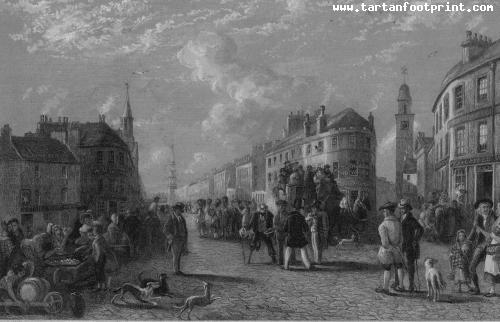You seem to be using an older version of Internet Explorer. This site requires Internet Explorer 8 or higher. Update your browser here today to fully enjoy all the marvels of this site.
December 2, 2018 by Alexander Meldrum
Scotlands Citys & Towns
Kilmarnock (Scottish Gaelic: Cille Mheàrnaig, "Meàrnag's church") is a large burgh in East Ayrshire, Scotland with a population of 46,350, making it the 15th most populated ...Scotlands Citys & Towns
Kilmarnock (Scottish Gaelic: Cille Mheàrnaig, "Meàrnag's church") is a large burgh in East Ayrshire, Scotland with a population of 46,350, making it the 15th most populated place in Scotland and the second largest town in Ayrshire.
The River Irvine runs through its eastern section, and the Kilmarnock Water passes through it, giving rise to the name 'Bank Street'.
The first collection of work by Scottish poet Robert Burns, Poems, chiefly in the Scottish dialect, was published in Kilmarnock in 1786, and became known as the Kilmarnock volume.
The internationally distributed whisky brand Johnnie Walker originated in the town in the 19th century and until 2012 was still bottled, packaged and distilled in the town at the Johnnie Walker Hill Street plant.
Protest and backing from the Scottish Government took place in 2009, after Diageo, the owner of Johnnie Walker announced plans to close the bottling plant in the town after 289 years.
The economy of Kilmarnock today is largely dependent on skill force knowledge, with companies such as Vodafone and Teleperformance occupying a large part of the Rowallan Business Park Centre which is also home to Food Partners, a nationwide sandwich franchise.
Local property redevelopment and regeneration company, The KLIN Group occupies the former Andrew Barclay Sons & Co.
offices in West Langland Street, Wabtec Rail Scotland operate a production factory for locomotives in the town centre and Utopia Computers, one of the UK's fastest growing computer companies also have their headquarters and main site situated in Kilmarnock in High Glencairn Street
The bakery company, Brownings the Bakers, was established in 1945 in Kilmarnock, and today, operates a large production plant at the town's Bonnyton Industrial Estate, with products being distributed across Scotland via chains such as Aldi, Lidl and Scotmid
The local newspaper, the Kilmarnock Standard has main offices in the centre of the town with publications taking place each Thursday per week.
Kilmarnock is home to Kilmarnock Academy, one of only two state schools in the world that have educated two Nobel Prize laureates, Alexander Fleming (born 1881), who became known for his groundbreaking discovery of Penicillin in 1928,
alongside John Boyd Orr, 1st Baron Boyd-Orr (born 1880) for his research and work into Nutrition as well as his work as the first Director-General of the United Nations Food and Agriculture Organization (FAO).
He was the co-founder and the first President (1960–1971) of the World Academy of Art and Science (WAAS).
In recent years, Kilmarnock has been used for musical acts and film locations. Rock band Biffy Clyro were formed in the town in a primary school in the mid-1990s.
The 2001 film, Pyaar Ishq Aur Mohabbat (2001) was shot in the town as was Manhunt (2004).
History
The name Kilmarnock comes from the Gaelic cill (cell), and the name of Saint Marnock or Mernoc who is also remembered in the name of Portmarnock in Ireland and Inchmarnock.
It may come from the three Gaelic elements mo, 'my', Ernán (name of the saint) and the diminutive ag, giving Church of My Little Ernán. According to tradition, the saint founded a church there in the 7th century.
There are 12 Church of Scotland congregations in the town, plus other denominations. In 2005, the Reverend David W.
Lacy, minister of the town's Henderson Church, was elected Moderator of the General Assembly of the Church of Scotland.
The core of the early town appears to have lain around what is now the Laigh Kirk, Kilmarnock (Low Church), although the oldest parts of the current building are no earlier than the 17th century, extending north and northwest.
In 1668 the town was largely destroyed by an accidental fire. About 120 families lost most of their possessions and were forced to live destitute in the fields surrounding the town.
These tradespeople had no other way of making a living and had already been driven to the edge of poverty by having troops stationed with them as part of the anti-Covenanter measures.
Parish churches throughout Scotland collected money for the relief of these homeless citizens.
A comparatively modest settlement until the Industrial Revolution, Kilmarnock extended considerably from around 1800 onwards, requiring the opening of King Street, Portland Street, and Wellington Street.
Added later was John Finnie Street, which is regarded as "one of the finest Victorian planned streets in Scotland." The Sandbed Street Bridge is the oldest known surviving bridge in the area.
Go to Wikipedia for full History
In this photo:


